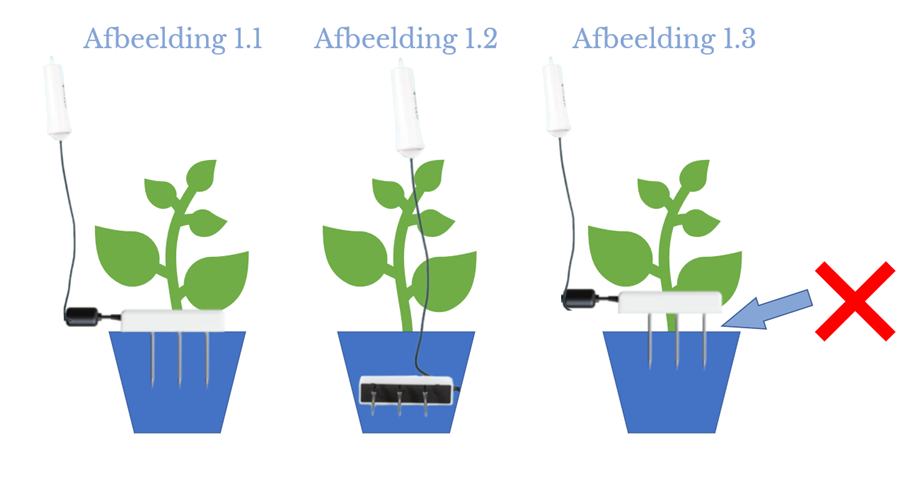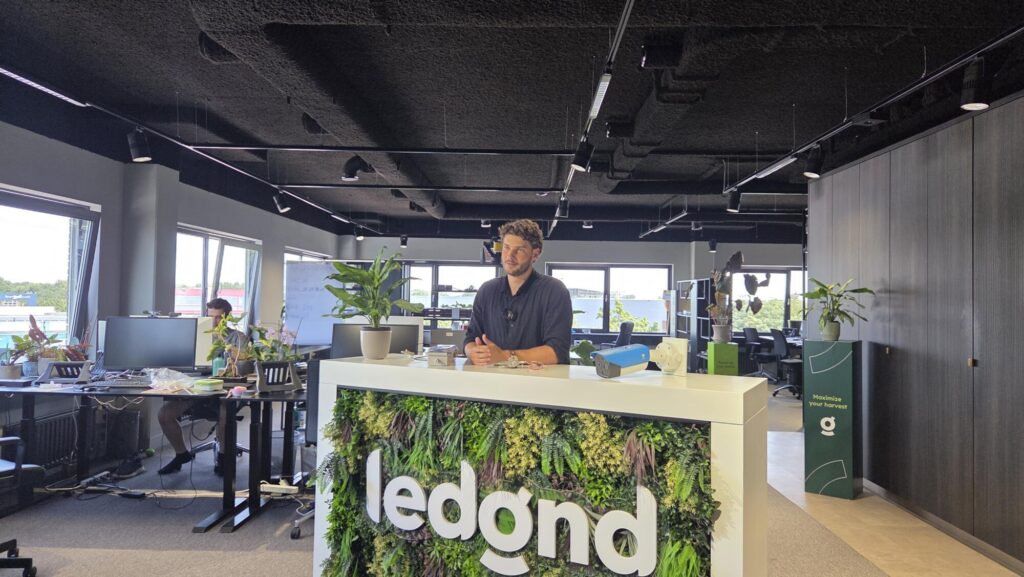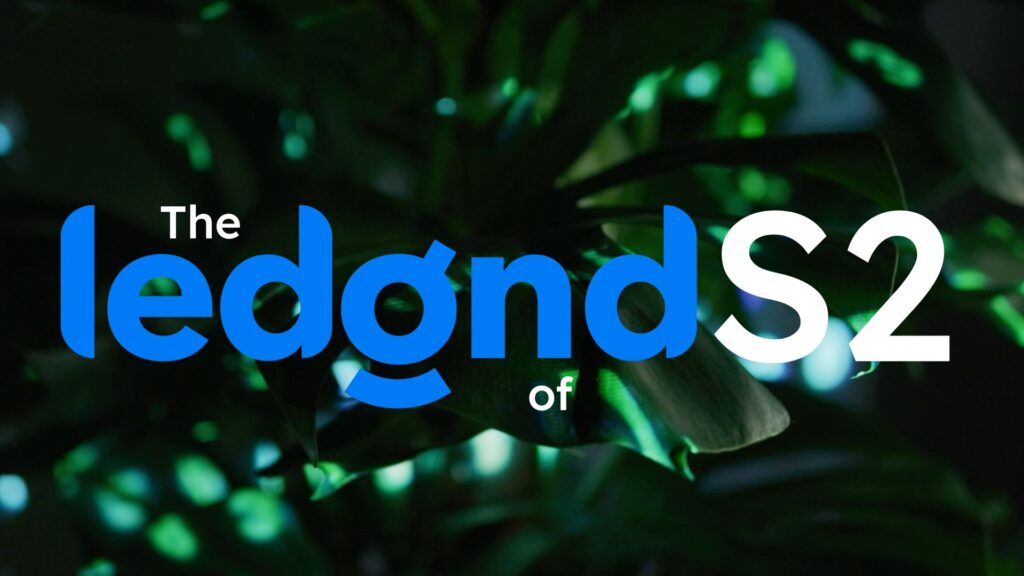Soil Sensor | What is it and how do you use it?
A soil sensor is a device that measures three variables of the substrate (the nutrient soil on which plants are planted), namely:
-
- The water content (%) as the amount of water (in percentage) in the substrate
- The temperature (°C)
- The salinity (mS/cm)
The salinity first measures the amount of salt in the substrate. This is called the bulk EC (mS/cm). The bulk EC is not yet of interest to a grower, as it does not show how much salt is available for a plant. For this, the grower needs the pore EC (mS/cm), which indicates the salinity available to the plant’s roots. To calculate this, the water content is needed.
Installation of the soil sensor
Place the soil sensor in the substrate. It is important that all three metal probes are fully embedded in the substrate and not sticking out into the air (as shown in image 1.3). When the metal probes are partly exposed to air, the substrate will not be fully measured.

The sensor only measures the substrate around the metal probes, not the entire substrate. Therefore, the positioning of the sensor is very important. If you place the sensor vertically at the top (see image 1.1), only the top part will be measured, where there are likely few roots present.
Therefore, place the sensor horizontally on the side of a pot (see image 1.2) if possible. This way, the substrate will be measured in the area where most of the roots are.
Do’s and Don’ts when installing a soil sensor
-
- Install the sensor at the location in the substrate where you want to collect data.
- Do not insert the sensor halfway into the substrate, as this will result in incorrect data.
- Do not measure edge plants, as they are not representative due to the edge effect.
Analyzing Data from the Soil Sensor
Every five minutes, the soil sensor measures and sends the temperature, water content, and EC values of the substrate to MyLedgnd.


-
- Time: Recognizing trends over a longer period is particularly important for the salt content (pore EC) and the water content (%) of the substrate. This allows you to see if irrigation/watering is going as expected and helps prevent water or salt stress for the plant.
- Air Temperature: By comparing the water content and the air temperature, you can gain insight into the effect of temperature on the rate at which the water content decreases. This provides an indication of the transpiration rate of a plant. Other factors that affect the transpiration rate include PAR/DLI and RH.
Air temperature, PAR/DLI, and RH also affect the salt content. For example, with a higher transpiration rate, the plant generally absorbs more water relative to salt in order to transpire. This leads to salt accumulation. Therefore, it’s important to regularly analyze the trends in pore EC and water content.
Advice from Ledgnd
The soil sensor provides insight into irrigation/irrigation practices in the greenhouse. By analyzing trends in water content and salt content, it is possible to minimize or even prevent plant stress. Furthermore, the soil sensor allows you to optimize irrigation/irrigation in the greenhouse.
New articles

How 2025 became the year of plant feedback, sustainability and collaboration
2025 was a year of contrasts for many growers: rising costs and stricter regulations, while at the same time more opportunities than ever to gain control of the crop using data. At Ledgnd, the year wa…

Ledgnd launches season 2 of video series “The Ledgnd of”
Ledgnd has launched the second season of its video series “The Ledgnd of”. The series takes a closer look at the key concepts and innovations shaping modern greenhouse horticulture. In the new season,…

Ledgnd at Hortibiz Next Level Data: From data to action
During the theme week “Next Level Data, Artificial Intelligence and Robotics” by Hortibiz News Radio, Ledgnd joined the table to talk about one key question: how do you turn all greenhouse data back i…
Read more

How 2025 became the year of plant feedback, sustainability and collaboration
2025 was a year of contrasts for many growers: rising costs and stricter regulations, while at the same time more opportunities than ever to gain control of the crop using data. At Ledgnd, the year wa…

Ledgnd launches season 2 of video series “The Ledgnd of”
Ledgnd has launched the second season of its video series “The Ledgnd of”. The series takes a closer look at the key concepts and innovations shaping modern greenhouse horticulture. In the new season,…

Ledgnd at Hortibiz Next Level Data: From data to action
During the theme week “Next Level Data, Artificial Intelligence and Robotics” by Hortibiz News Radio, Ledgnd joined the table to talk about one key question: how do you turn all greenhouse data back i…
Do you want to know more?
Interested in what Ledgnd can do for you? Leave your phone number, and we will contact you as soon as possible for a non-binding informational conversation

